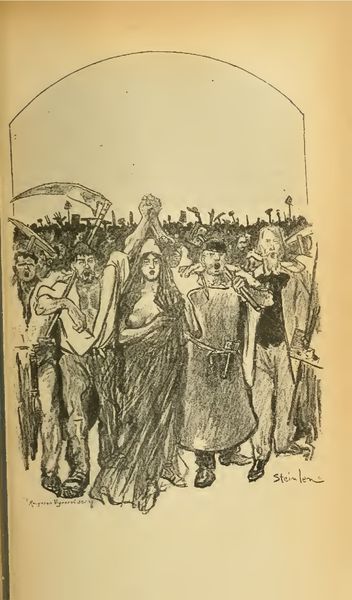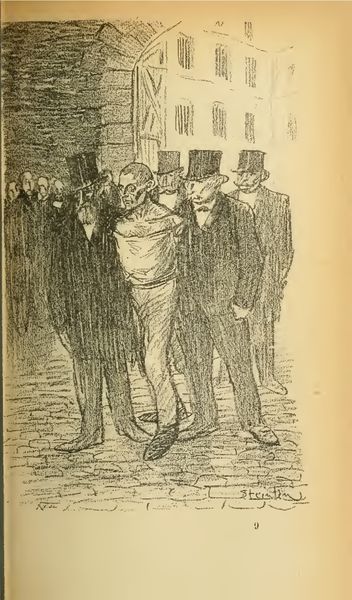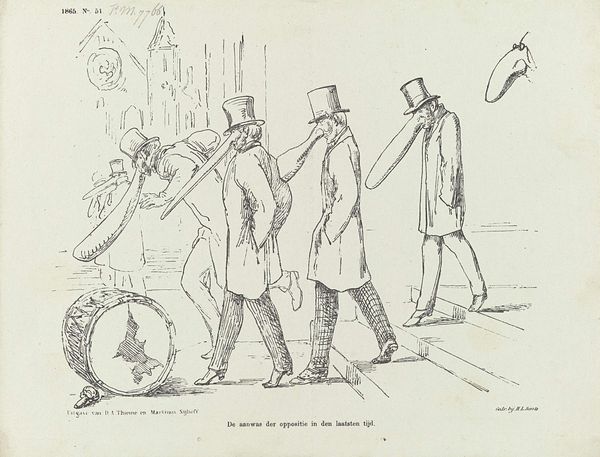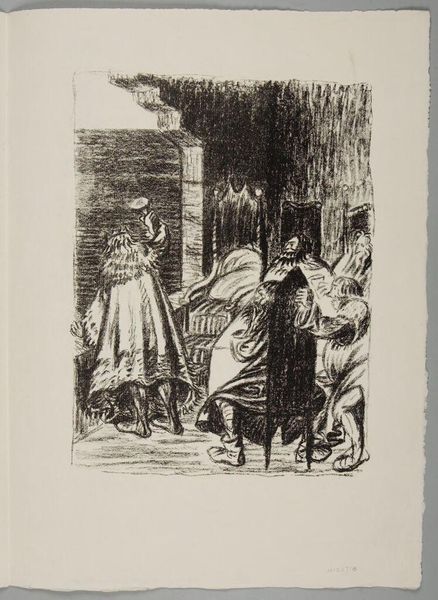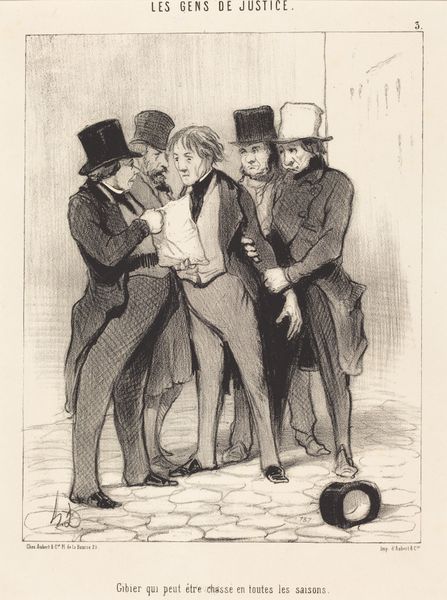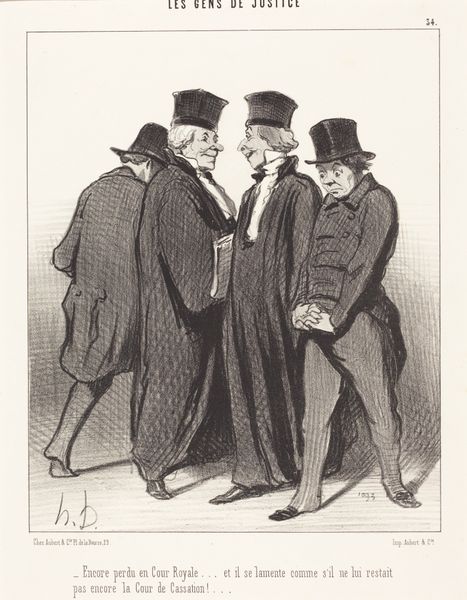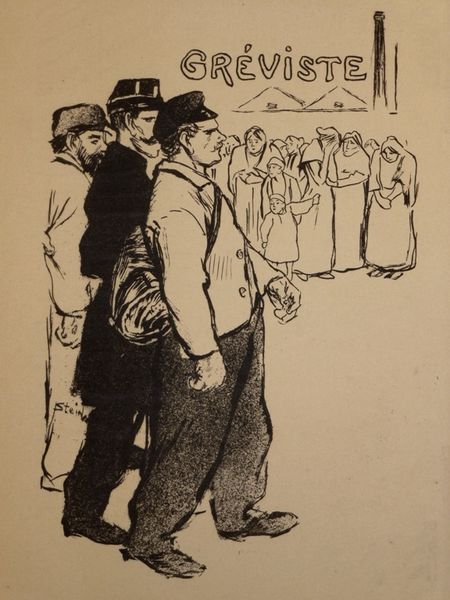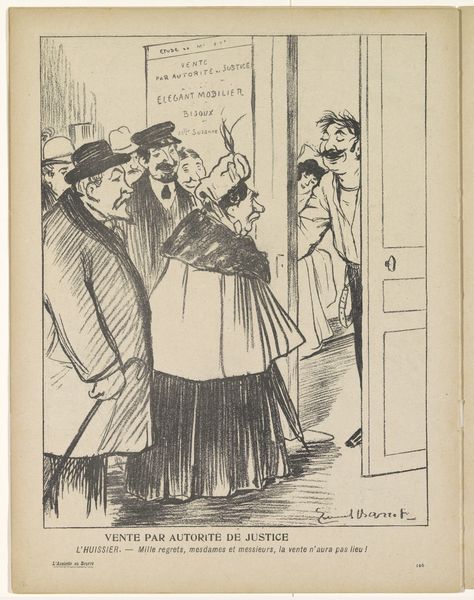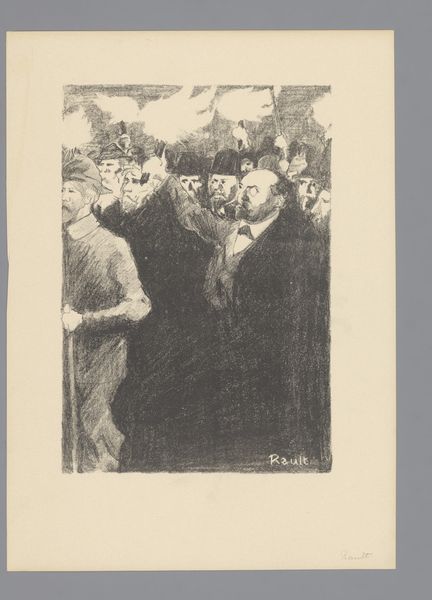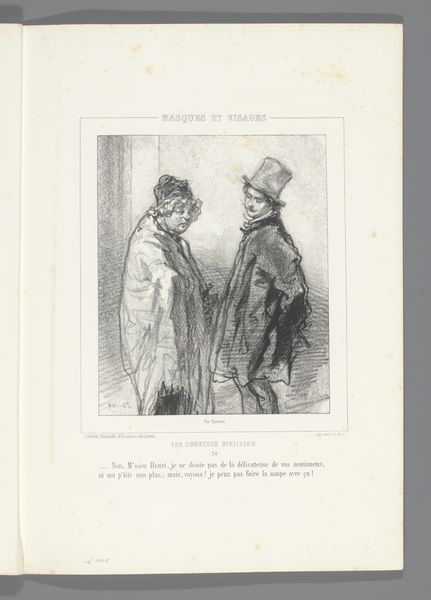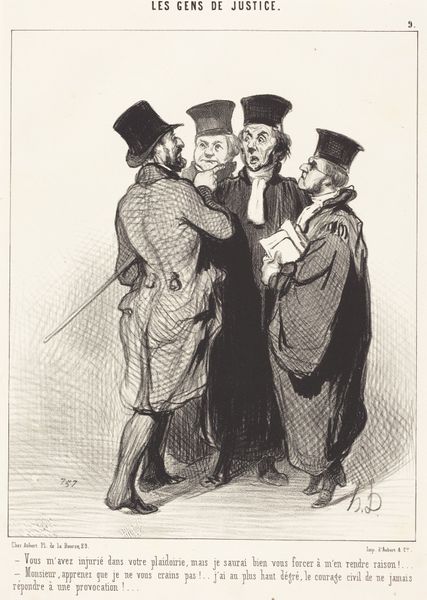
drawing, ink
#
drawing
#
ink drawing
#
caricature
#
ink
#
symbolism
#
genre-painting
Copyright: Public domain
Editor: So, this ink drawing is titled "Noel Rouge" by Théophile Alexandre Steinlen. It seems to depict a group of rather smug-looking figures standing in front of three crosses. What I immediately notice is the sharp, almost cynical line work. What stands out to you in this piece? Curator: Considering the material context, let's think about what the process of creating this ink drawing would entail. It's likely rapidly executed, intended for reproduction, perhaps in a journal or as a print. The very nature of ink lends itself to reproducibility and wide circulation, think about its role in disseminating information and propaganda at the time. How do the figures' costumes reflect their place in society, and what material evidence suggests that placement? Editor: They appear to be authority figures of some kind: maybe politicians or clergy members. Their elaborate robes and top hats indicate wealth, while the stark crosses in the background create a really disturbing contrast, maybe reflecting the hypocrisy of these powerful figures. Curator: Exactly. Now, what about the implied labour involved in producing their garments? Consider the fine fabrics, the tailoring... the vast social inequalities inherent in the production and consumption of such goods. Steinlen is inviting us to analyze not just the image, but the systems of labour that made their appearances possible, emphasizing material disparities. Where does the 'rouge' in "Noel Rouge" figure into your analysis, given our attention to material reality? Editor: I hadn’t considered the 'rouge' as connected to the men. So maybe 'Red Christmas' implies a reference to bloodshed linked to class struggle or societal injustice rather than, say, festive cheer. It is no coincidence this image has powerful men juxtaposed to a Golgotha of working people. I appreciate this lens because, at first glance, I hadn’t looked beyond my initial emotional response, whereas now, seeing their clothes and relating them to this bloody scene, I'm considering it much more from the viewpoint of resource disparity and social commentary. Curator: Precisely! We're invited to consider the real-world implications behind seemingly simple images and understand art as evidence of its time.
Comments
No comments
Be the first to comment and join the conversation on the ultimate creative platform.
